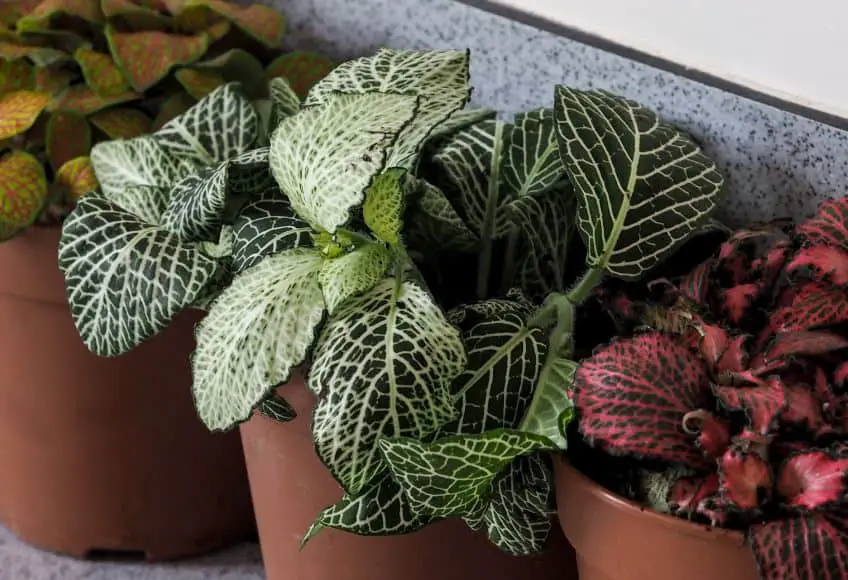Look for the Fittonia nerve plant in the house for something special. Be advised that these plants may also go by mosaic plant or painted net leaf when you buy them. Both growing and caring for nerve plants are simple processes.

Fittonia Nerve Houseplants
Fittonia argyroneura is a plant often found in tropical areas and belongs to the Acanthaceae (Acanthus) family. It has striking white and green leaves, pink and green, or green and red. The predominant color of the leaves is olive green, with veining that is a distinct color. Additional Fittonia nerve houseplants with distinctive color traits are F. argyroneura, which has silver-white veins, and F. pearcei, a stunning carmine pink with carmine veins.
The Fittonia nerve plant, named for its 19th-century discoverers, botanists Elizabeth and Sarah May Fitton, actually blooms. The tiny reddish-to-white spikes that make up the flowers tend to blend in with the rest of the foliage. The nerve plant seldom produces flowers when kept inside as a houseplant.
This vibrant houseplant, native to Peru and other regions of the South American rainforest, enjoys high humidity but not excessive watering. This little beauty grows wonderfully in terrariums, dish gardens, hanging baskets, and even as a ground cover in the correct conditions.
Oval-shaped leaves on rooted, mat-forming stems are seen in the low-growing, trailing foliage.
These sections of the rooted stem may be split, or you can take cuttings from the tip to grow more Fittonia nerve houseplants.
Nerve Plant Care
The nerve plant thrives in an area with high humidity since it is native to the tropics. To maintain humid-like conditions, misting can be necessary.
Fittonia nerve plant prefers moist, well-drained soil that is not very damp. Allow developing nerve plants to dry out between waterings and mildly water them. To prevent shock, provide water to the plant at room temperature.
The Fittonia nerve plant, which may grow to a maximum size of 12 to 18 inches (30-45.5 cm) by 3 to 6 inches (7.5-15 cm) or longer, tolerates intense light conditions but thrives in indirect light that is bright. These plants will turn back to green under low light conditions, removing the vivid flashes of color in the veins.
Growing nerve plants should be kept warm to prevent shocks from drafts and extremes in water temperature. Treat your Fittonia nerve houseplants as if they were in a rainforest.
Follow your fertilizer brand’s feeding recommendations for tropical indoor plants.
The plant’s tendency to trail might give it a rambling look. To make the nerve plant bushier, prune the tips of the plant.
Nerve Plant Problems
Although there aren’t many difficulties with nerve plants, avoid overwatering since it may cause root rot, as was already explained. The plant may also be harmed by mosaic virus and Xanthomonas leaf spot, which both induce the postmortem of the veins.

